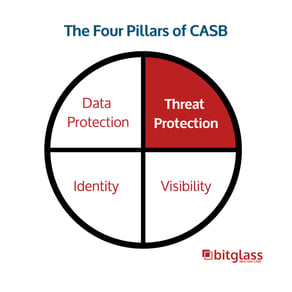The Four Pillars of CASB: Threat Protection
Published 11/18/2019
By Juan Lugo Product Marketing Manager at Bitglass

Threat protection is integral for defense against malware. Oftentimes, months go by without organizations realizing that they have been infected with malware – rather than addressing the problem after the fact, it is best to prevent the attack in real time.
There are two ways to classify malware – known and unknown. Known malware, as it has been seen before and the way that it infects organizations is understood, is easier to remediate with standard anti-malware tools. Unknown malware, also known as zero-day malware, is particularly dangerous because it is a brand new threat that the organization and most anti-malware vendors are not aware of. Consequently, these zero-day threats are harder to detect, and standard tools are unable to protect against them.
First generation CASBs rely on signature-based protection, which is a method that accesses an extensive catalog to identify the type of malware. However, security solutions that only utilize signature based detection are only able to stop threats that have been recorded in the past. Behavior-based protection stops malware proactively, and is capable of protecting against these zero-day threats.
Using a data-centric approach empowers organizations to secure their sensitive data without the need to install agents onto unmanaged devices.
For a deeper look at the impact that malware and data breaches pose on organizations, download the Malware, P.I. – Tracking Cloud Infections report.
This blog is part of the Four Pillars series, read the other blog posts here
Unlock Cloud Security Insights
Subscribe to our newsletter for the latest expert trends and updates
Related Articles:
When is SD-WAN Zero Trust and When is it Not?
Published: 03/08/2023
What is a CASB and How Does it Integrate with DLP?
Published: 12/19/2022
Security Service Edge (SSE) Reflects a Changing Market: What You Need to Know
Published: 02/24/2022
Multi Cloud Security
Published: 02/17/2022


.png)


-reflects-a-changing-market-what-you-need-to-know.jpg)
